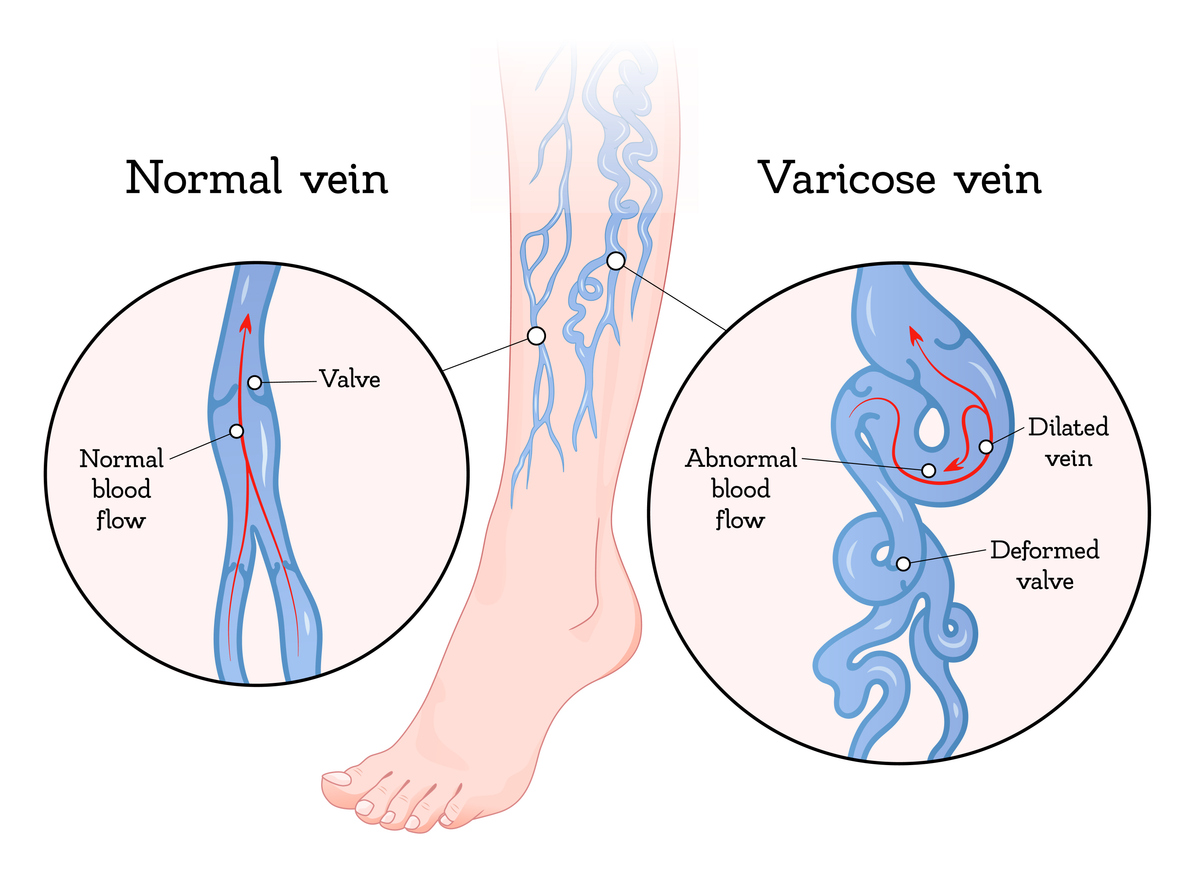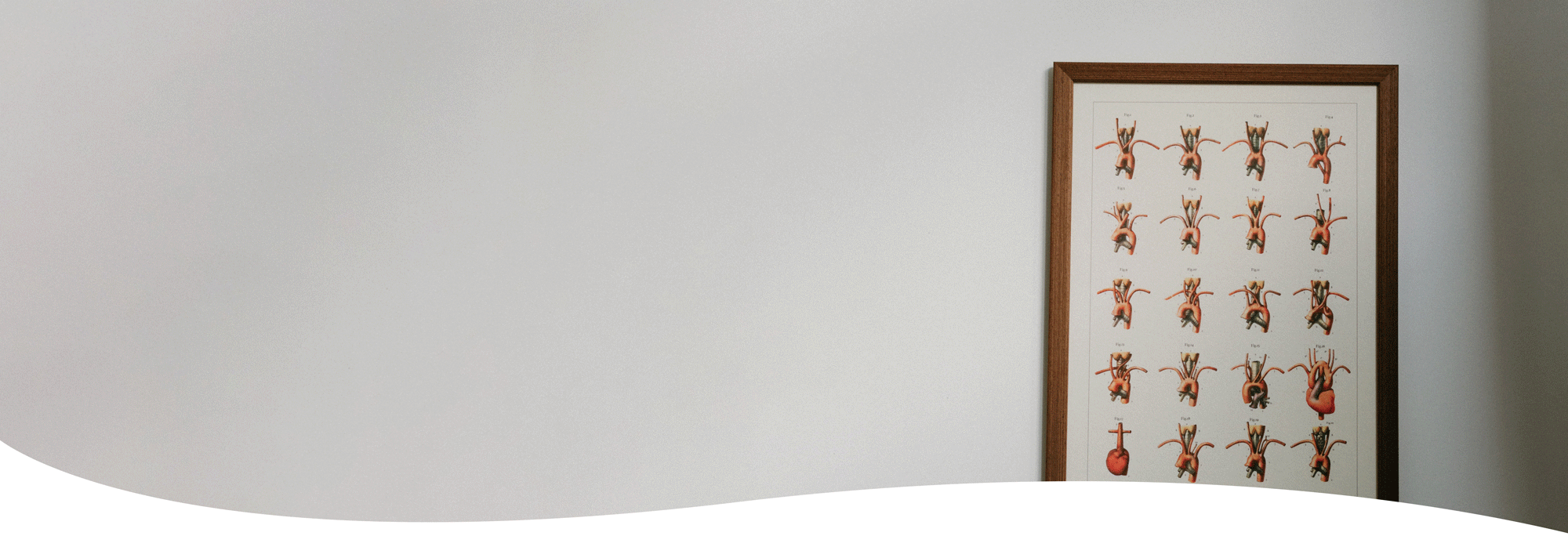Varicose Veins
What are Varicose Veins?
- Varicose Veins are superficial veins (just underneath the skin layer) that are abnormally dilated, distended and tortuous. They are referred to as varicose which comes from the Latin word for dilated. Veins are the blood vessels that drain and return the leg blood back to the heart to be re oxygenated and then delivered again back down through the arteries.
- When you veins are abnormally dilated (Varicose Veins), they cause pooling of blood and thus can eventually have an impact on the surrounding skin. Most of the time they are not a sign of serious concern and only appear unsightly. But in some severe cases they can cause the overlying skin to weaken and eventually cause ulceration.
- Varicose Veins are typically found in the legs, thighs, feet and even the groins.

Why do they occur?
The superficial veins in your legs returns blood back to your heart. When standing up internal valves in the vein prevent the blood from draining back down. When the veins become varicose (dilated) the valves are no longer functional and the blood ‘pools’ in the superficial veins.
- Many of us have jobs and recreations that require us to stand or sit for long periods of time. And as a result, gravity persists on our legs during this period. If our superficial veins in our legs do not have functional valves or are dilated (varicose) then they begin to progressively get worse with time. Sometimes it’s as simple as breaking up your workload and walking or elevating your legs to prevent such ‘stasis’ or ‘pooling’ in the veins.
- The valves in our veins are very fragile and can be damaged for many reasons. A history of clot in the vein (Deep Vein Thrombosis or Superficial Thrombosis) can cause the valves to scar up and no longer function as well.
- When the Veins become Varicose, and the skin overlying the veins becomes progressively thin, the colour of the skin can change and become a darker appearance and even become stained. It’s usually a good time to see your doctor if this does happen.
Venous Anatomy, what are the different Veins in my leg?
- The main differentiator between veins in the leg is how deep they are. Superficial Veins are just underneath the skin. Deep Veins exist in the centre of the leg in between the muscles and are encircled by a layer of tissue called fascia. This fascia is what separated Deep from Superficial.
- The Superficial Veins are a complex of many veins that drain into two main openings in the fascia that eventually allows the blood to drain back into the deeper veins that go to the heart. These two main Vein openings are in the Groin and the back of the knee (The Saphenofemoral and Saphenopopliteal junctions respectively).
- We can safely treat superficial veins by tying off or obstructing these two entry points which prevents high pressured blood from back filling into the superficial veins.
Why me?
- Varicose Veins Can occur for many reasons and do not necessarily have one specific cause. There are some genetic factors and some environmental or lifestyle causes.
- Pregnancy, for example can increase the pressure in the veins in the leg and can exacerbate if not initiate varicose veins developing. It is also common to see that Varicose Veins progressively enlarge the more pregnancies a person may have.
- Long periods of standing can increase the pressure in our veins. Occupations such as being a Chef, Flight Attendants, Teachers and even Surgeons, may experience long hours of standing upright. This can be associated with progressive varicose veins as they are subjected to long hours of gravitational pressure.
How to minimise Varicose Veins?
- Sometimes all we need is a little rest. Elevation of our legs, particularly high elevation to above our heart level, can significantly reduce the pressure in our leg veins. This can help alleviate the progressive pressure that drives varicose veins. Some people may find elevation of their legs for a period before bed or at the end of a long day can really help take the pressure out of their veins.
- Compression stockings, garments, socks and even compression pantyhose have all been shown to reduce varicose vein pressure. There are many different options and different products available. Its best to consult with your doctor as to the type that best suits you.
- The normal and successful way the legs ‘pump’ blood back to the heart is by muscle function. Every step you take causes your muscles in your legs to contract. It’s the contraction of the muscle the squeezes and pumps the blood in the veins back towards the heart. Therefore, walking regularly and even sometimes leg exercises, can improve your venous circulation and function.
How to remove Varicose Veins?
- When your varicose veins are becoming a problem for you, whether its pain, skin changes, thinning or staining of the overlying skin, or even signs of ulceration, removing the superficial veins could be helpful.
- The methods of removing your faulty veins varies from surgery to simple injections. The options are best discussed and tailored to what your specific needs are. Each option caries advantages and disadvantages. Its best to speak with your specialist regarding all possible options as you may have a better outcome with surgery or injections.
What is the surgical option?
- Surgical stripping involves tying off the large superficial vein in the groin or behind the knee and stripping it out completely. This has been a long-standing option which dates back many decades.
- The junction where the superficial veins drain into the deep vein (through the fascia – see above) is in the groin and behind the knee. They are called the saphenofemoral and the saphenopopliteal junctions respectively.
- For the Saphenofemoral junction the vein that is then stripped is called the great saphenous vein.
- The Great Saphenous Vein (GSV) runs underneath the skin on your inner thigh and all the way down to your ankle. It is often the cause of most varicose veins and the main vein that is targeted in treatment.
- There is also an additional step to surgery which is referred to as avulsions. Just as the name suggests the superficial veins that are most bulky are ‘avulsed’ or removed from underneath the skin with a small stab opening which then heals into a tiny scar.
What is endovenous or minimally invasive vein treatment?
- Another way to remove or block off the faulty main superficial vein is by blocking the inside of it. That way the blood can’t backfill and pool into the superficial veins and raise the pressure.
- This is done by inserting a probe on a catheter tip into the vein via a small puncture or needle entry point often below the knee. The probe then emits heat either in the way of laser or radiofrequency (generally this is referred to as thermal ablation). The emission of this heat in a way burns the inside of the vein and thus causes it to collapse on itself and scar up. Thus, shutting it down and stopping it from pooling blood into the superficial layer of the leg.
- Ultrasound imaging is crucial during this procedure as it allows the surgeon to see the effects on the vein in real time and prevent any unnecessary heat damage to deeper veins or surrounding nerves.
